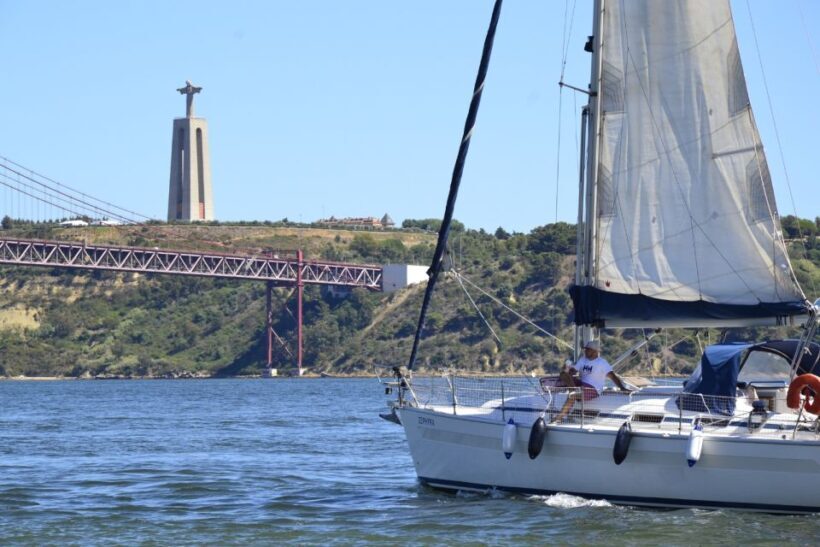© 2025 AffordableJourney. Built with care by our team. All rights reserved.
Sailing from Europe to South America: The Slowest—and Most Beautiful—Way to Travel
By Hannah Greer
An unforgettable ocean crossing full of sunsets and soul-searching.
Why I Chose the Sea Instead of the Sky
Most people, when faced with the task of crossing the Atlantic, default to the obvious choice: a flight. It’s fast, efficient, and—let’s be honest—much easier on the patience. In under 12 hours, you can leap from one continent to another, skipping over the vast blue void entirely.
But that was exactly the problem for me: the skipping. The ocean is not just a thing to be “flown over”—it’s an entire living, breathing part of the Earth, a space that humankind has navigated for centuries with both awe and trepidation.
When I was offered the chance to join a small crew sailing from Lisbon, Portugal to Salvador, Brazil, I felt that pull deep in my chest. It was equal parts excitement and fear. Sailing meant time—nearly three weeks of it. Time with no escape route if I got seasick, no cafés to wander into, no cell service to check my social media every hour.
And that’s exactly what I wanted.
After years of traveling quickly—weekend city breaks, fast trains, budget flights—I craved the slow unfolding of a journey where the getting there was as significant as the arrival. I wanted to feel the distance, to see the horizon shift, to watch the stars without city lights swallowing them whole.
The decision was met with mixed reactions. Friends said, “You’re crazy, what if there’s a storm?” Others sighed with envy and called it romantic. My parents, predictably, asked for daily updates… before I gently reminded them that I wouldn’t have Wi-Fi.
When I boarded the vessel—a sturdy 50-foot monohull named Mar Azul—the harbor was alive with the clinking of rigging, the smell of diesel mingling with salt, and the murmur of gulls overhead. As Lisbon’s pastel skyline faded into the horizon, I realized I wasn’t just starting a trip. I was stepping into a different way of experiencing the world.

Learning the Rhythm of Life at Sea
If the first day at sea felt like a romantic postcard, the second was a wake-up call—literally. The ocean has its own rhythm, and if you’re not ready to match it, you’ll find yourself either clinging to the rails in seasick misery or lying in your bunk wondering what on earth you signed up for.
Our days quickly fell into a routine dictated not by clocks but by the watch schedule. We were six on board, divided into pairs for four-hour shifts around the clock. That meant I could be on deck at 2 a.m. under a canopy of stars one night, and watching the sunrise over an endless horizon the next.
Cooking became an adventure in itself. In calm waters, we could chop vegetables for a pasta dinner without much trouble. In rough seas, even boiling water for tea felt like a minor miracle. I learned to wedge myself into a corner of the galley, bracing my knees and elbows to keep from sliding.
There’s a unique intimacy that develops on a small boat. You hear every creak of the hull, smell the coffee brewing before dawn, and see your crewmates at their best and worst—bedhead, salt-sprayed clothes, bursts of laughter, quiet moments of reflection. Conversations stretched long, weaving from personal stories to debates about music, books, and the strange quirks of ocean travel.
And then there was the silence—the kind you only get when you’re hundreds of miles from shore. No traffic hum, no phone notifications, no background chatter. Just the sound of wind in the sails and the water rushing past the hull. It wasn’t an empty silence—it was full, alive, and oddly comforting.
By the end of the first week, I stopped thinking in days. Time was measured in sunsets, in the phases of the moon, in the gradual shift from the cool air of the North Atlantic to the warm breath of the tropics.

The Beauty (and Challenges) of the Mid-Ocean Days
There’s a magic to being in the middle of the Atlantic that’s impossible to fully describe until you’ve been there. The nearest land might be hundreds of miles away, but you don’t feel isolated—you feel connected, as if you’ve tapped into a deep, ancient route followed by countless sailors before you.
Every day brought new colors. The ocean was not just “blue”—it was steel grey at dawn, dazzling turquoise in midday light, and deep indigo under the stars. Some mornings, flying fish would leap alongside the boat, glittering like silver coins before vanishing beneath the waves.
Of course, beauty came with its challenges. We had days of relentless headwinds that slowed our progress, making the boat heel at uncomfortable angles. Simple tasks like brushing teeth or pulling on a sweater became slapstick performances. I learned quickly to keep one hand free to grab something sturdy at all times.
There were also moments of emotional fatigue. Life at sea means you can’t just “go for a walk” to clear your head. If a conversation gets tense or a crewmate’s habit starts to grate on you, you have to navigate those feelings in close quarters. But the ocean has a way of softening egos—its vastness reminds you that whatever’s bothering you is small in the grand scheme of things.
And then there were the nights. Standing on deck for the 2 a.m. watch, I’d look up to see more stars than I ever knew existed, the Milky Way stretching like a river of light across the sky. Sometimes dolphins would appear, their bodies glowing faintly in the bioluminescent water, like living comets streaking beneath us. Those moments made every patch of rough weather worth it.

The Emotional Arrival in South America
After nearly three weeks, the first sign of land was not visual—it was olfactory. A faint, warm scent of earth and vegetation drifted over the water, growing stronger with each hour. Then came the sight of the coastline: a hazy green line that sharpened into the contours of hills, palm trees, and brightly painted buildings as we approached Salvador.
The city unfolded like a painting—colonial architecture in soft pastels, fishing boats bobbing near the shore, and the rhythmic sound of samba drifting from somewhere unseen. After the endless motion of the ocean, the stillness of the harbor felt surreal.
Stepping onto the dock was both grounding and strange. My legs wobbled from “sea legs,” and the noise of traffic and voices felt overwhelming. But alongside that disorientation came a profound gratitude. The journey had been slow, yes—but in that slowness, I’d experienced more than I could have on any flight. I’d seen the ocean breathe, felt its moods, learned its patience.
As we tied off Mar Azul and prepared to disembark, I realized that while the voyage was technically over, its impact would ripple through my travels for years to come. I’d been reminded that the way you move through the world matters just as much as where you go. And sometimes, the slowest way there is the one that stays with you the longest.




